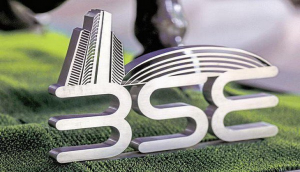
- \"Conventional indicators of debt sustainability, i.e. level and cost of debt, indicate that debt profile of the government is comfortably placed in terms of sustainability parameters of public debt and is consistently improving,\" he said in a foreword to the status paper on government debt.
- The debt-GDP ratio worked out to 66.7 per cent at March-end 2015, significantly lower than historic high of 83.3 percent in 2003-04 owing to fiscal consolidation at central and state levels.
Finance Minister Arun Jaitley sought to play down worries on the government's public debt, saying it's in a comfortable position and the overall liabilities of the Centre are on a medium-term declining trajectory.
"Conventional indicators of debt sustainability, i.e. level and cost of debt, indicate that debt profile of the government is comfortably placed in terms of sustainability parameters of public debt and is consistently improving," he said in a foreword to the status paper on government debt.
He further said the overall liabilities of the central government are on a medium-term declining trajectory with a low rollover risk. "The government is primarily resorting to market-linked borrowings for financing its fiscal deficit," Jaitley added.
Most of the debt is of domestic origin insulating the debt portfolio from currency risk, he said, adding that limited external debt provides safety from volatility in international financial markets.
The central government's debt at 47.1 percent of GDP at end of March 2015 has stabilised after witnessing a consistent decline from 61.4 percent in 2001-02. In value terms, the debt stood at Rs 59.07 lakh crore at March-end 2015, up from Rs 53.40 lakh crore at the end of 2013-14, according to the report.
The debt-GDP ratio worked out to 66.7 per cent at March-end 2015, significantly lower than historic high of 83.3 percent in 2003-04 owing to fiscal consolidation at central and state levels.
As much as 93.8 percent of total central government debt at March-end 2015 is denominated in India's currency.
As percentage of GDP, external debt constituted a low 2.9 percent, implying low currency risk to government debt portfolio, and the impact on balance of payments remains insignificant.
Most of the public debt in India is at fixed interest rates, with only around 1 percent floating rate debt at March-end 2015, insulating debt portfolio from interest rate volatility and providing stability to the Budget in terms of interest payment.
"The government is continuing its efforts to elongate the maturity profile of its debt portfolio for lower rollover risk," it said.
The largely domestic and institutional investor profile contributes to stable demand for government securities and its ownership pattern indicates a gradual broadening of market over time.
-PTI
First published: 4 February 2016, 2:47 IST






![BJP's Kapil Mishra recreates Shankar Mahadevan’s ‘Breathless’ song to highlight Delhi pollution [WATCH] BJP's Kapil Mishra recreates Shankar Mahadevan’s ‘Breathless’ song to highlight Delhi pollution [WATCH]](https://images.catchnews.com/upload/2022/11/03/kapil-mishra_240884_300x172.png)

![Anupam Kher shares pictures of his toned body on 67th birthday [MUST SEE] Anupam Kher shares pictures of his toned body on 67th birthday [MUST SEE]](https://images.catchnews.com/upload/2022/03/07/Anupam_kher_231145_300x172.jpg)






